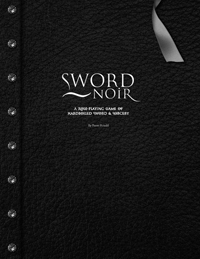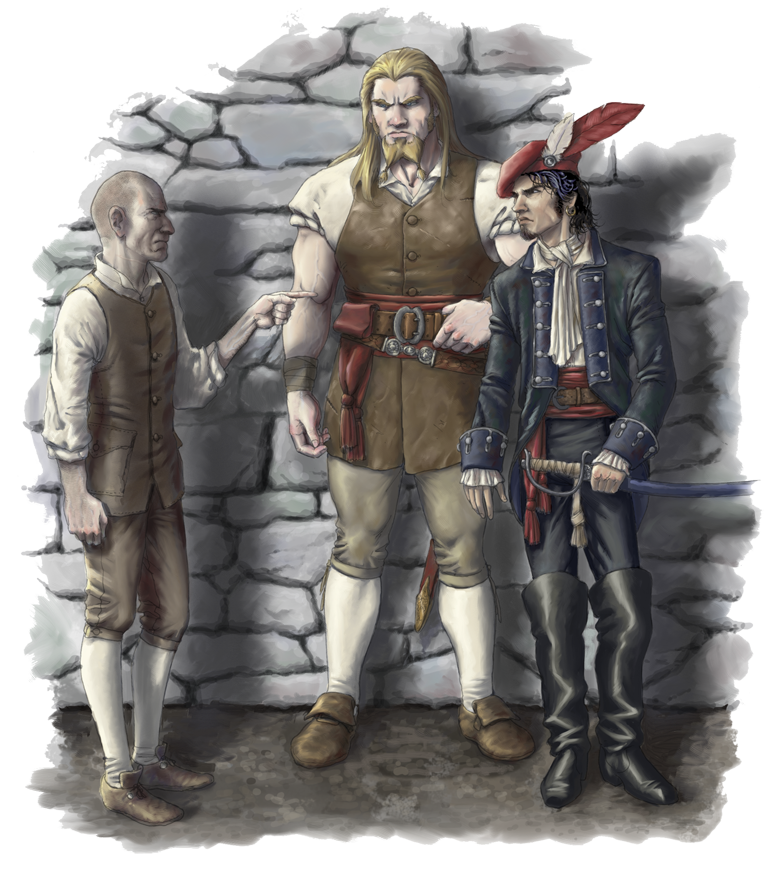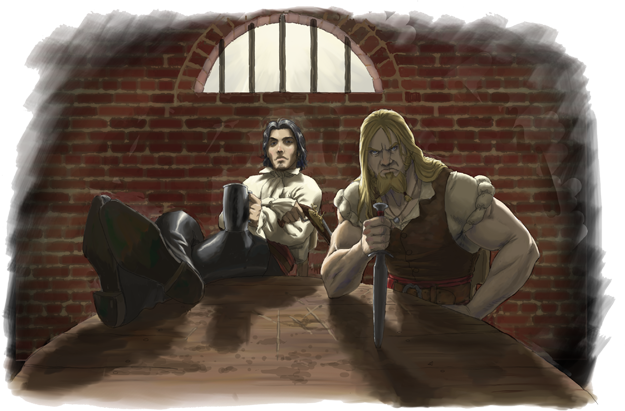The Return of SEP
 Back in 2004, a friend and I decided to become role-playing game publishers, possibly for the wrong reasons – we wanted publish our stuff rather than wanting to be publishers. Given that, we still went forward in as professional a manner as possible.
Back in 2004, a friend and I decided to become role-playing game publishers, possibly for the wrong reasons – we wanted publish our stuff rather than wanting to be publishers. Given that, we still went forward in as professional a manner as possible.
While we established Sword’s Edge Publishing as a business, I’m afraid I ran it as hobbyist. I made decisions based on my interests and enthusiasms. I should have been looking to build the brand and increase SEP’s audience. In the end, when I lost interest, SEP went to sleep.
It has only recently returned to bring forth some new games, and then quickly returned to its slumber. This last year, from April 2011 (when it released Sword Noir) to January 2012 (when it released the adventure Suffer the Witch), SEP did things a little different than it had before.
There’s no need to get into a discussion of the inspiration to create Sword Noir: A Role-Playing Game of Hardboiled Sword & Sorcery; I’ve written of it elsewhere. I’d rather focus on how I changed the business model for Sword Noir and its follow-on game, Kiss My Axe: Thirteen Warriors and an Angel of Death. I think I’ve been clear enough that I have not been a very professional publisher.
That’s not say I haven’t produced some good stuff – I think I have – or that I haven’t been dealt fairly with those with whom I’ve worked – I’m damn sure I have – but I wasn’t approaching the business as a professional. I was a hobbyist. That changed in 2011.
And let’s be clear: for almost all the business decisions I’ve made and continue to make for SEP, I act like a hobbyist. However, I approached the production of Sword Noir and later Kiss My Axe as a professional.
Right off the bat, I decided I would put money into the projects. Almost all my investment in SEP after paying for the business licence was sweat equity. That’s what SEP was predicated on, the sweat equity of those people working on the projects. In the end, we all got a cut of the profits. For Sword Noir, I was going to actually invest in the product.
My first step was to figure out a budget. In order to figure out a budget, I had to know how many pages I could expect to produce. Art, layout, editing – the things I would be paying other people to do – are based more or less on page count. For layout and editing, it is directly based on page count, as the fee is per page (at least, as I worked it out, it was), whereas art is based indirectly on the page count, in that you want art every X number of pages.
 So I wrote the damn thing. Not the whole thing, mind you, but most of it. It gave me a ballpark for page count so I could estimate how much I needed to pay people.
So I wrote the damn thing. Not the whole thing, mind you, but most of it. It gave me a ballpark for page count so I could estimate how much I needed to pay people.
Now, here’s where I cheated. The artist, graphic designer, and editor were all close friends, guys with whom I used to game. Ed Northcott is a professional artist. Rob Wakefield is a professional graphic designer. Chris Groff is a professional pain in the ass . . . who happens to have the mutant ability to break games, and so I wanted him to “stress test” my system. If you have friends who have skills like these, you can do what I did.
I figured out what a fair wage in the RPG market would be. This is not the fair wage in any other industry. Rates in the RPG industry are low even in comparison to the short fiction market.
What do I consider fair wage in the RPG market? For art, I looked at the pay scale offered by Steve Jackson Games. For graphic design including cover, I paid $2 per page; for mechanics editing, $1 per page. Chris also acted as a kind of proof reader, but I really brought him on board to find the games’ weaknesses and make suggestions to improve the mechanics.
Each of these guys deserved more than that, but that’s what I could pay them. Because they are my friends, they accepted that along with residuals. The deal is, once Sword Noir makes a profit, each contributor gets a cut of that profit.
To be honest, in the RPG industry, you could probably go with the rates I mentioned and still have people willing to work on your project. And they’ll probably deliver an acceptable level of quality. I, however, wanted to pay people what they were worth. I couldn’t do it right away, so I made a downpayment, and hopefully Sword Noir will continue to earn us beer money well into our old age.
 Along with the investment in talent, I bought some advertisements. They were banner ads on sites at an impression rather than click through rate. I was also offered a test drive of Google Adwords, which I used to promote Sword Noir.
Along with the investment in talent, I bought some advertisements. They were banner ads on sites at an impression rather than click through rate. I was also offered a test drive of Google Adwords, which I used to promote Sword Noir.
To make a long story short, I didn’t see any real value in either of these methods. I think a more sustained, targeted ad campaign by a company that actually has the pockets for it might be of value. For a little nothing like SEP, I got a lot more value out of Twitter, messageboards, and word of mouth.
I really saw no impact from the advertisements. That could easily be my lack of marketing knowledge, but along with everything else, I really couldn’t afford a marketer.
What did all this cost me? The budget for Sword Noir stands at $1338.59. As of April 25, 2012, revenue for Sword Noir stands at $1,221.64. We’re close to breaking even. Damn close. I expected a couple of years, and we might do it in one and a half. That’d be pretty sweet.
I followed the same pattern for Kiss My Axe, but with slightly different results, and therein lies a bit of a lesson. But that’s another story.
Art copyright 2010 Ed Northcott.